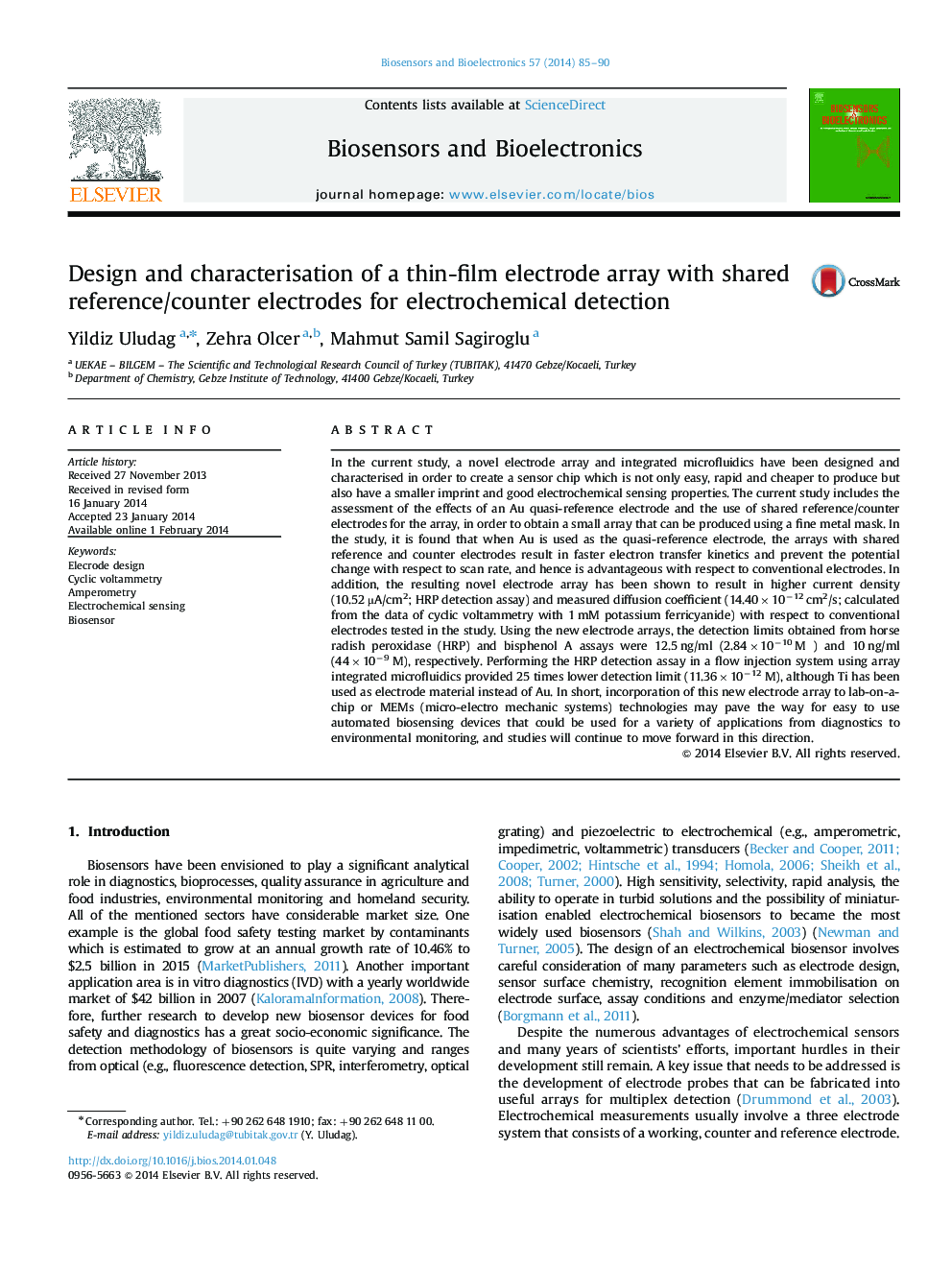| Article ID | Journal | Published Year | Pages | File Type |
|---|---|---|---|---|
| 7233534 | Biosensors and Bioelectronics | 2014 | 6 Pages |
Abstract
In the current study, a novel electrode array and integrated microfluidics have been designed and characterised in order to create a sensor chip which is not only easy, rapid and cheaper to produce but also have a smaller imprint and good electrochemical sensing properties. The current study includes the assessment of the effects of an Au quasi-reference electrode and the use of shared reference/counter electrodes for the array, in order to obtain a small array that can be produced using a fine metal mask. In the study, it is found that when Au is used as the quasi-reference electrode, the arrays with shared reference and counter electrodes result in faster electron transfer kinetics and prevent the potential change with respect to scan rate, and hence is advantageous with respect to conventional electrodes. In addition, the resulting novel electrode array has been shown to result in higher current density (10.52 µA/cm2; HRP detection assay) and measured diffusion coefficient (14.40Ã10â12 cm2/s; calculated from the data of cyclic voltammetry with 1 mM potassium ferricyanide) with respect to conventional electrodes tested in the study. Using the new electrode arrays, the detection limits obtained from horse radish peroxidase (HRP) and bisphenol A assays were 12.5 ng/ml (2.84Ã10â10 M ) and 10 ng/ml (44Ã10â9 M), respectively. Performing the HRP detection assay in a flow injection system using array integrated microfluidics provided 25 times lower detection limit (11.36Ã10â12 M), although Ti has been used as electrode material instead of Au. In short, incorporation of this new electrode array to lab-on-a-chip or MEMs (micro-electro mechanic systems) technologies may pave the way for easy to use automated biosensing devices that could be used for a variety of applications from diagnostics to environmental monitoring, and studies will continue to move forward in this direction.
Related Topics
Physical Sciences and Engineering
Chemistry
Analytical Chemistry
Authors
Yildiz Uludag, Zehra Olcer, Mahmut Samil Sagiroglu,
